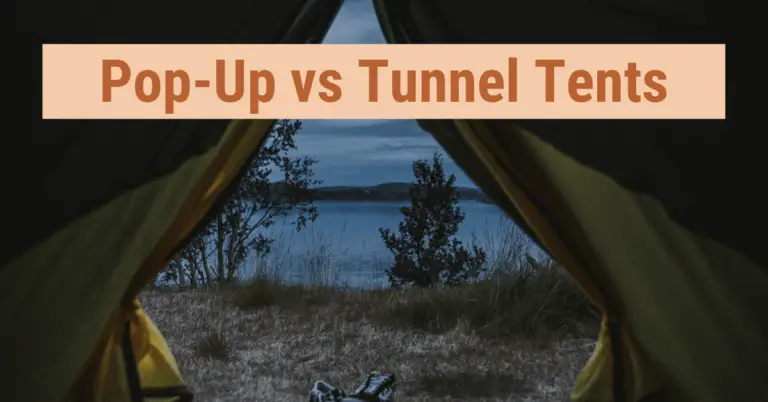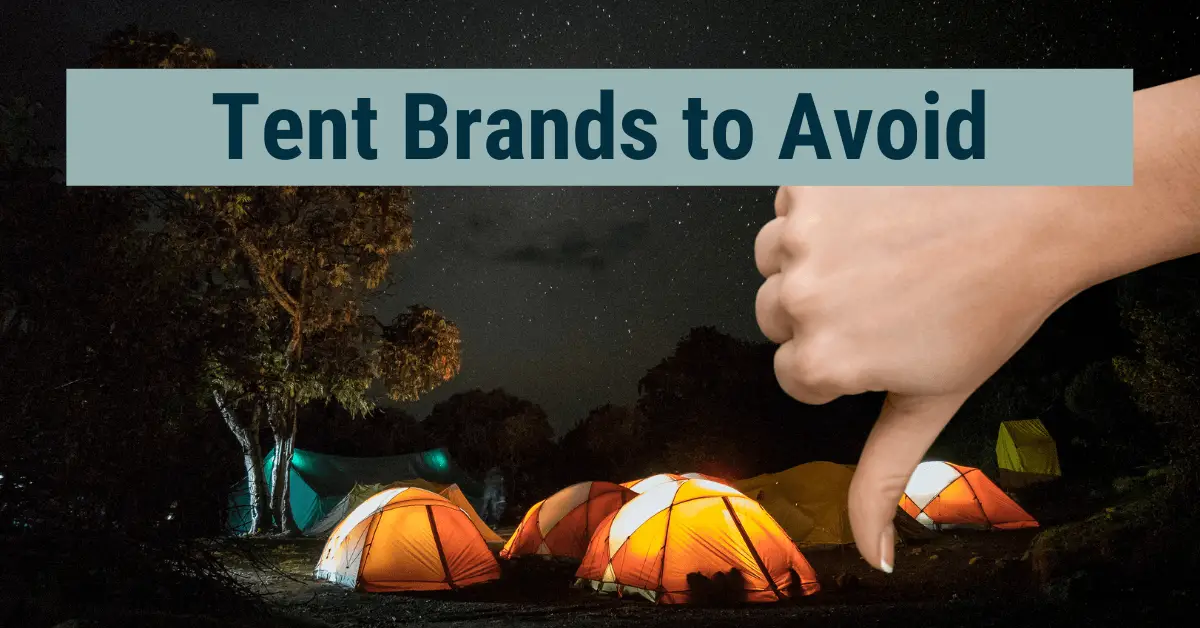When comparing a pop-up tent vs tunnel tent, these two different designs come with important considerations to think about before you make your decision! Extra space from tunnel tents comes with some tradeoffs that may change your plans.
We’ve broken down the major similarities and differences of common tent types to help you make the right decision for your next outdoor adventure!
Pop-Up Tent vs Tunnel Tent
First, let’s break down each type of tent:
Major Differences
The biggest differences between a pop-up tent vs tunnel tent are capacity and portability. Tunnel tents come in capacities of up to about 8 people and may also be large enough to stand in. These tents use multiple arcing poles in a row to provide structure for the tent that allows for a semicircle-type roof that enables far more space than the sharply angled a-frame tent. In comparison, pop-up tents use a series of poles integrated within the fabric to spring into their shape that usually caps out around 4 people but are much easier to set up.
Pop-up tents typically employ a two-layer design to repel rain but the second layer only covers the very top of the tent, as opposed to longer rain flys present in A-frame or Dome tents. As seen in the photos above, pop-up tents use a single layer of rain protection for up to 75% of each side. Tunnel tents frequently use a single-layer tent which allows for larger windows and can allow for better airflow than pop-up tents.
While they should both offer fine rain protection, other tent types may be more reliable in harsher storms since pop-ups are built for convenience as opposed to protection and other structures may be stronger with more rain coverage.
Best Uses For Pop-Up & Tunnel Tents
Each of these types of tents is great for both small-family and car camping! Smaller families may prefer the simplicity offered by pop-ups or enjoy the larger amount of space offered by tunnel tents. Neither tent is appropriate for backpacking (there are better options) as they almost always have too large of a package to reasonably pack and walk miles with.
Pop-Up | Tunnel | |
Feature Comparison | Pop-Up Tent vs Tunnel Tent
Tunnel tents have the advantage of high capacity while pop-up tents are significantly easier to set up. Each have similar rain protection with the limited dual-layer of pop-ups and frequent single-layer tunnel tent design. Not sold on either type? We’d recommend a dome tent for any type of camper from beginner to expert!
Product | Pop-Up | Tunnel |
Sturdiness | ||
Capacity | ||
Cost | ||
Portability | ||
Lifespan |
Want more?
Check out our infographic and larger article covering the ten most common tent types or use our tent finding tool to quickly find the tents that suit your needs!







